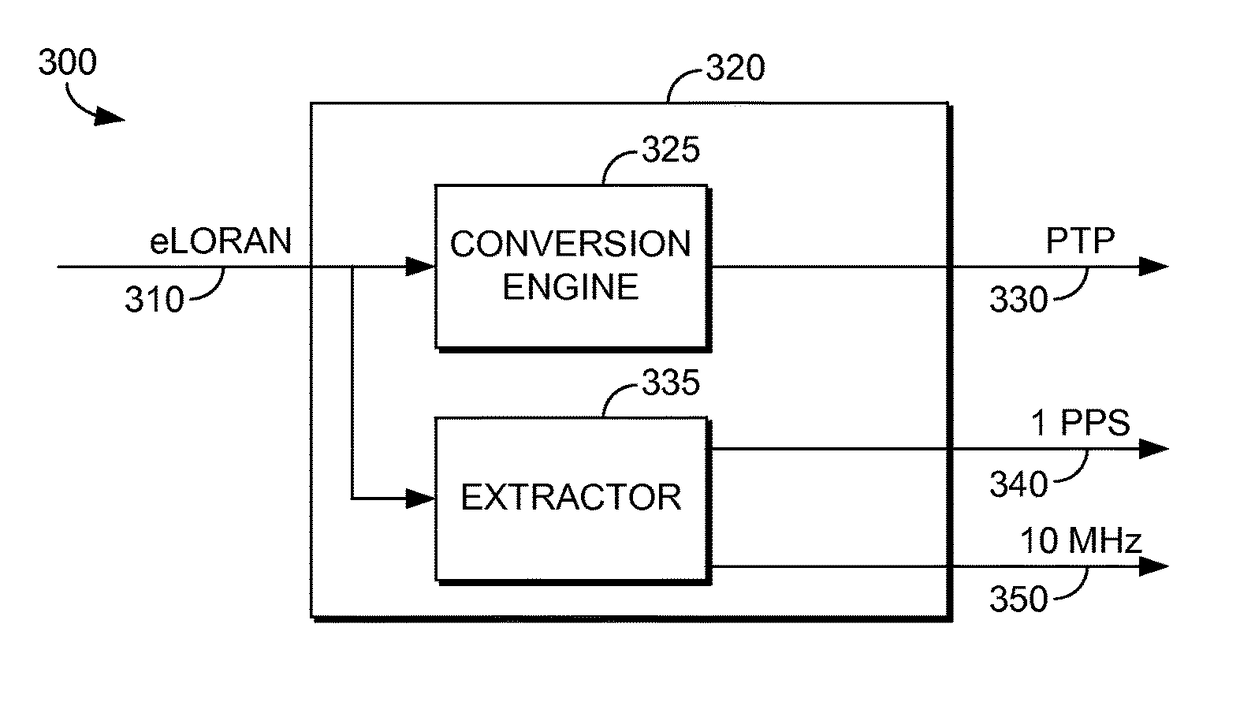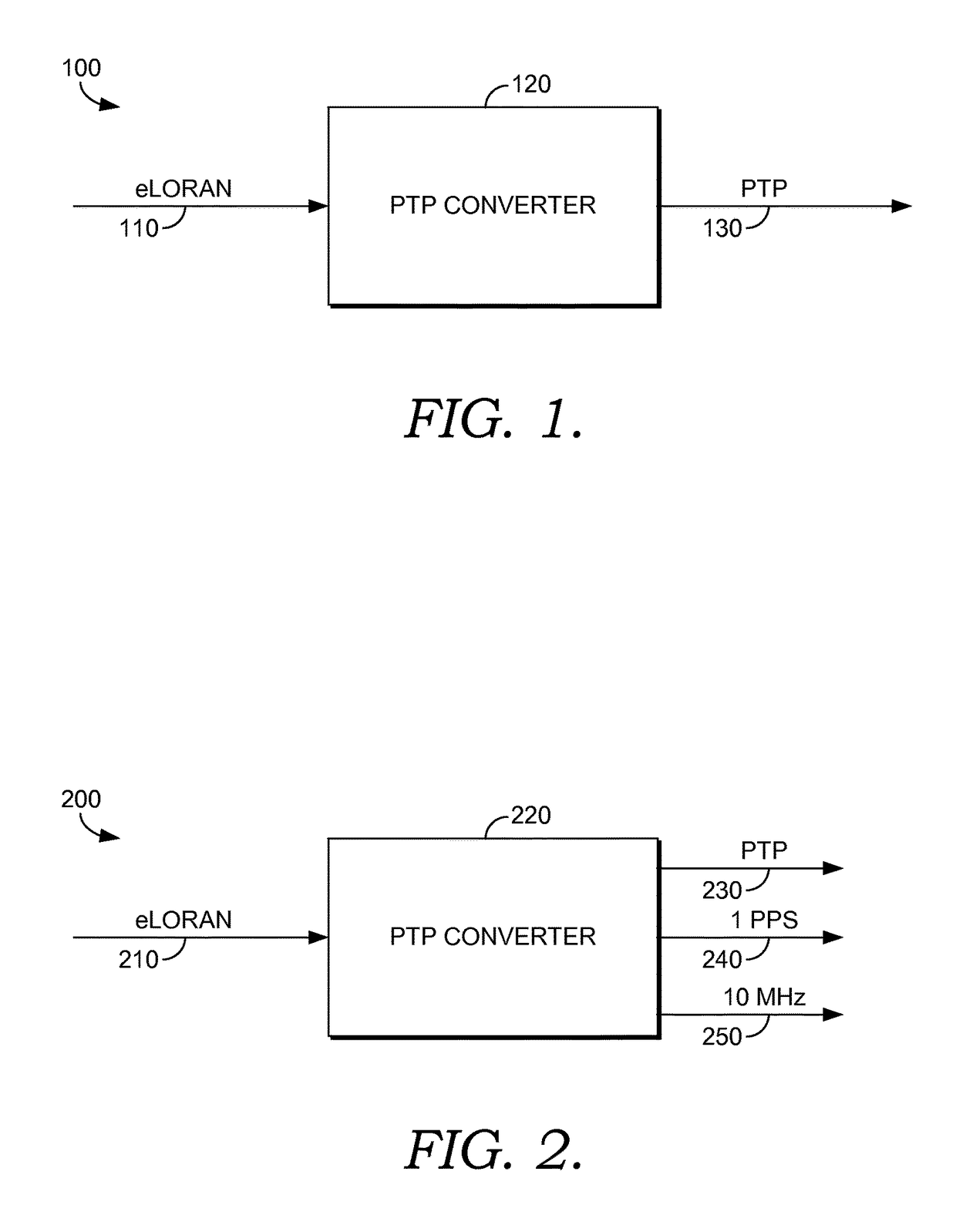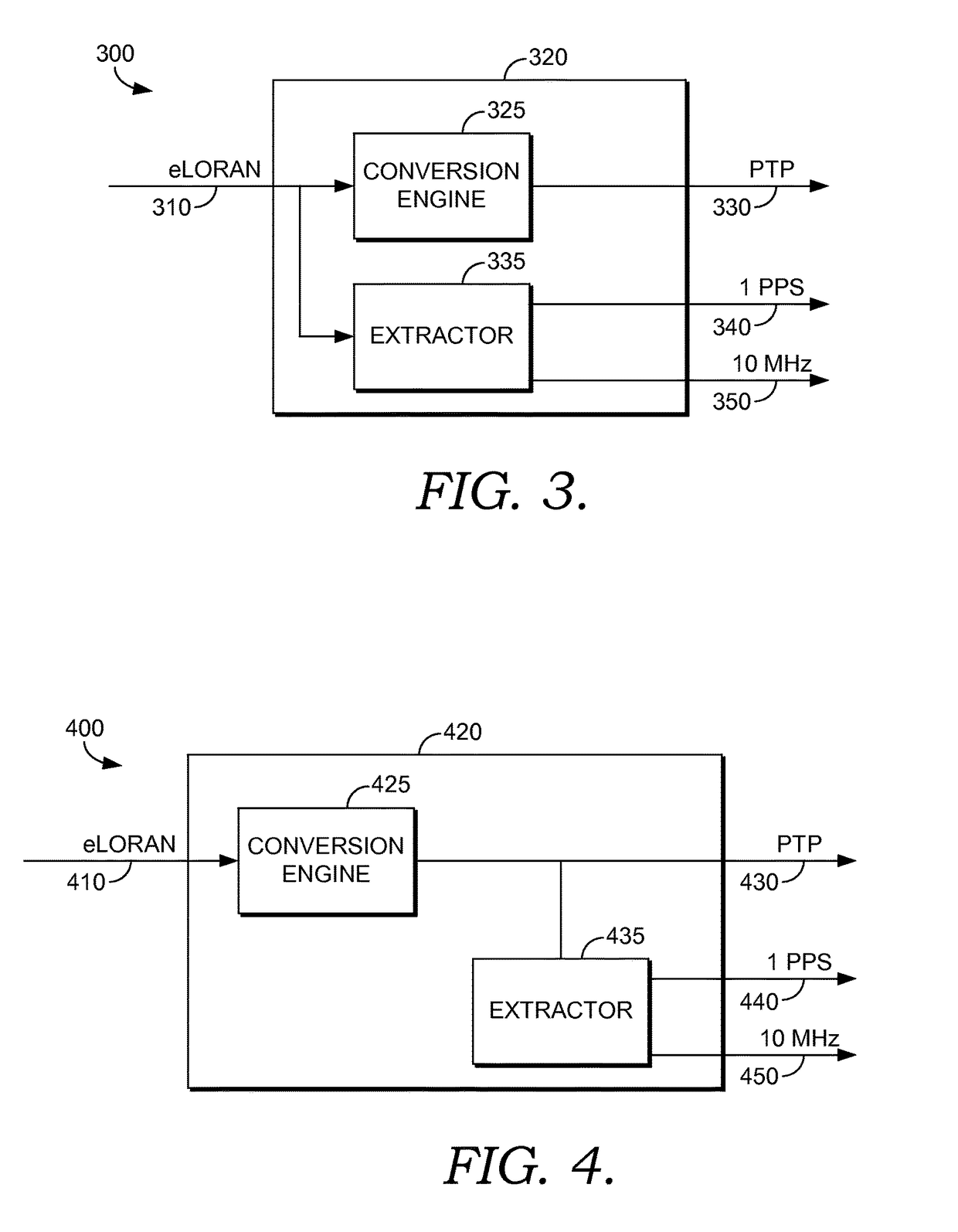Adapter that converts enhanced long range navigation (eLORAN) to precision time protocol (PTP)
a technology of precision time and navigation, applied in the direction of synchronisation signal speed/phase control, synchronisation arrangement, instruments, etc., can solve the problems of gps signal loss, gps signal loss from satellites, jamming and other interferences,
- Summary
- Abstract
- Description
- Claims
- Application Information
AI Technical Summary
Benefits of technology
Problems solved by technology
Method used
Image
Examples
Embodiment Construction
[0015]Embodiments of the present invention relate generally to a method and system for converting an enhanced Long Range Navigation (eLORAN) signal to a Precision Time Protocol (PTP) signal when the GPS signal is unavailable or lost from a GPS satellite. An adapter receives an eLORAN signal, which is a RF signal, extracts certain data from the Loran data channel, performs a conversion, and outputs a PTP signal over an Ethernet cable.
Acronyms and Shorthand Notations
[0016]Throughout the description of the present invention, several acronyms and shorthand notations are used to aid the understanding of certain concepts pertaining to the associated system and services. These acronyms and shorthand notations are solely intended for the purpose of providing an easy methodology of communicating the ideas expressed herein and are in no way meant to limit the scope of the present invention. The following is a list of these acronyms:
[0017]
eLORANEnhance Long Range NavigationeNodeBEnhanced Node ...
PUM
 Login to View More
Login to View More Abstract
Description
Claims
Application Information
 Login to View More
Login to View More - R&D
- Intellectual Property
- Life Sciences
- Materials
- Tech Scout
- Unparalleled Data Quality
- Higher Quality Content
- 60% Fewer Hallucinations
Browse by: Latest US Patents, China's latest patents, Technical Efficacy Thesaurus, Application Domain, Technology Topic, Popular Technical Reports.
© 2025 PatSnap. All rights reserved.Legal|Privacy policy|Modern Slavery Act Transparency Statement|Sitemap|About US| Contact US: help@patsnap.com



